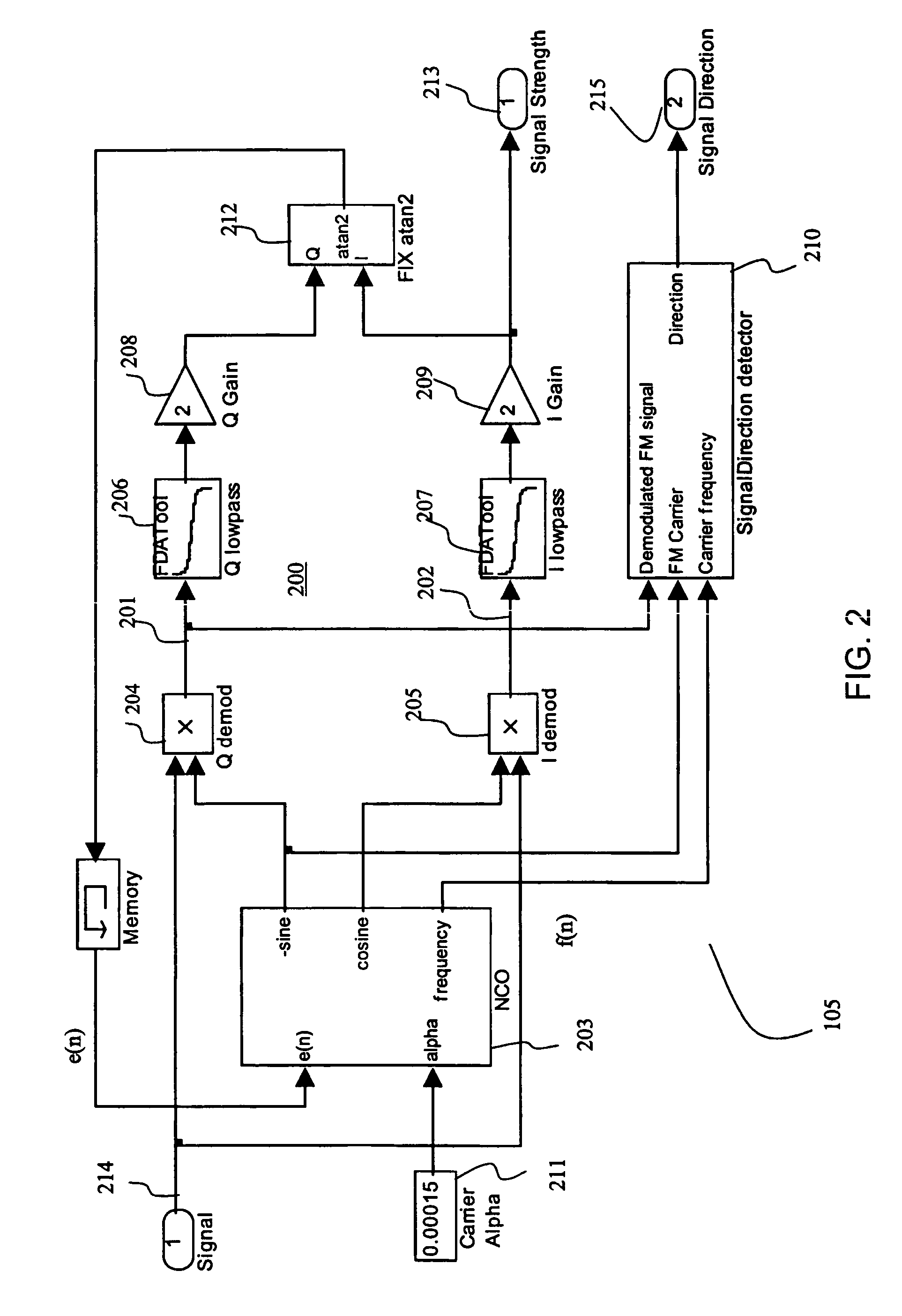Method and apparatus for digital detection of electromagnetic signal strength and signal direction in metallic pipes and cables
a technology applied in the field of digital detection of electromagnetic signal strength and signal direction in metallic pipes and cables, can solve the problems of difficult reliable determination of signal direction, significant radio frequency interference on the signal received by the receiver, and difficult calibration process itself, so as to reduce the requirements of analog front-end hardware, reduce calibration and test time, and wide resistance to component tolerances
- Summary
- Abstract
- Description
- Claims
- Application Information
AI Technical Summary
Benefits of technology
Problems solved by technology
Method used
Image
Examples
Embodiment Construction
[0043]FIG. 8 illustrates a conductor locator system 800 according to some embodiments of the present invention. As shown in FIG. 8, line locator system 800 includes a transmitter 802 and a receiver 803 (not drawn to scale). Transmitter 802 is electrically coupled,—directly, capacitively, or through induction—to a target conductor 801. Target conductor 801 can be a pipe, wire, or other elongated conductor. Conductor 801 is hidden by a surface 811. Surface 811 can be the ground, in which case conductor locator system 800 is a line locator system. In some embodiments, surface 810 can be a wall or other surface.
[0044]In some embodiments, transmitter 802 can provide a signal to conductor 801 at one of a set of user-selectable carrier frequencies. In some embodiments, the user-selectable frequencies range from a few kHz to a few MHz. Additionally, the signal may be frequency modulated (FM modulated). In response to the signal supplied by transmitter 802, conductor 801 generates an electro...
PUM
 Login to View More
Login to View More Abstract
Description
Claims
Application Information
 Login to View More
Login to View More - R&D
- Intellectual Property
- Life Sciences
- Materials
- Tech Scout
- Unparalleled Data Quality
- Higher Quality Content
- 60% Fewer Hallucinations
Browse by: Latest US Patents, China's latest patents, Technical Efficacy Thesaurus, Application Domain, Technology Topic, Popular Technical Reports.
© 2025 PatSnap. All rights reserved.Legal|Privacy policy|Modern Slavery Act Transparency Statement|Sitemap|About US| Contact US: help@patsnap.com



